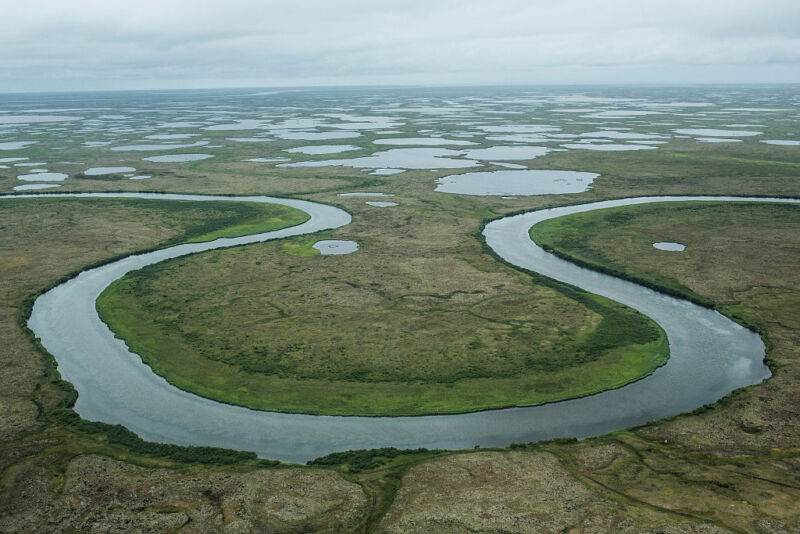Thawing Permafrost Exposes Old Pathogens And New Hosts

The Arctic—that remote, largely undisturbed, 5.5 million square miles of frozen terrain—is heating up fast. In fact, it’s warming nearly four times quicker than the rest of the world, with disastrous consequences for the region and its inhabitants. Many of these impacts you probably know from nature documentaries: ice caps melting, sea levels rising, and polar bears losing their homes. But good news! There is another knock-on effect to worry about: the warming landscape is rewiring viral dynamics, with the potential to unleash new pathogens.
An underappreciated consequence of climate change is how it will exacerbate the spread of infectious disease. As the world heats up, many species are expected to up sticks and meander many miles away from their typical habitat, bringing various pathogens along with them for the ride. This means that previously unacquainted viruses and hosts will meet for the first time, potentially leading to viral spillover—where a virus jumps from one reservoir host to a new one, like our old friend SARS-CoV-2.

And a part of the world where this has a good chance of happening is the Arctic. In a new paper published in the journal the Proceedings of the Royal Society B, a group of researchers from the University of Ottawa tried to quantify the spillover risk in the region. They went to Lake Hazen, a freshwater lake in Canada located inside the Arctic Circle, and took samples of the soil and lake sediment, before sequencing the genetic material in these samples to identify what viruses were present. They also sequenced the genomes of potential hosts in the area, including animals and plants.
They then tried to gauge how likely it was that a virus might jump into a new species. To do this, they looked at the genetic history of a virus and its typical host. If a host and a virus show similar patterns in how they have evolved, it suggests that they’ve lived in tandem for a long time, and that the virus doesn’t tend to move into other species. If their patterns of evolution are very different, it suggests the virus has spent time living in other hosts, has jumped before, and is more likely to do so again.
Knowing the propensity of viruses in the region to move species, they then used a computer algorithm to estimate how climate change would alter the likelihood of them doing so. They used the increasing flow of meltwater off nearby glaciers as a proxy for increasing temperatures, and found that as temperatures rise and glacier runoff increases, the risk of viruses in the area jumping hosts goes up with it. Why? As meltwater streams into the lake, it carries and deposits sediment, which unsettles the lake’s population and, by disturbing this environment, speeds up pathogens’ evolution against their hosts’ immune defenses.
One important caveat is that it’s not possible to give a definite answer on what will actually happen. “We’re not able to say, ‘We are going to have serious pandemic issues in the High Arctic,’” says Stéphane Aris-Brosou, an author on the paper and associate professor of biology at the University of Ottawa. The work is really just trying to quantify the risk of a spillover happening. “It’s absolutely impossible to predict this kind of event.”
READ MORE HERE


